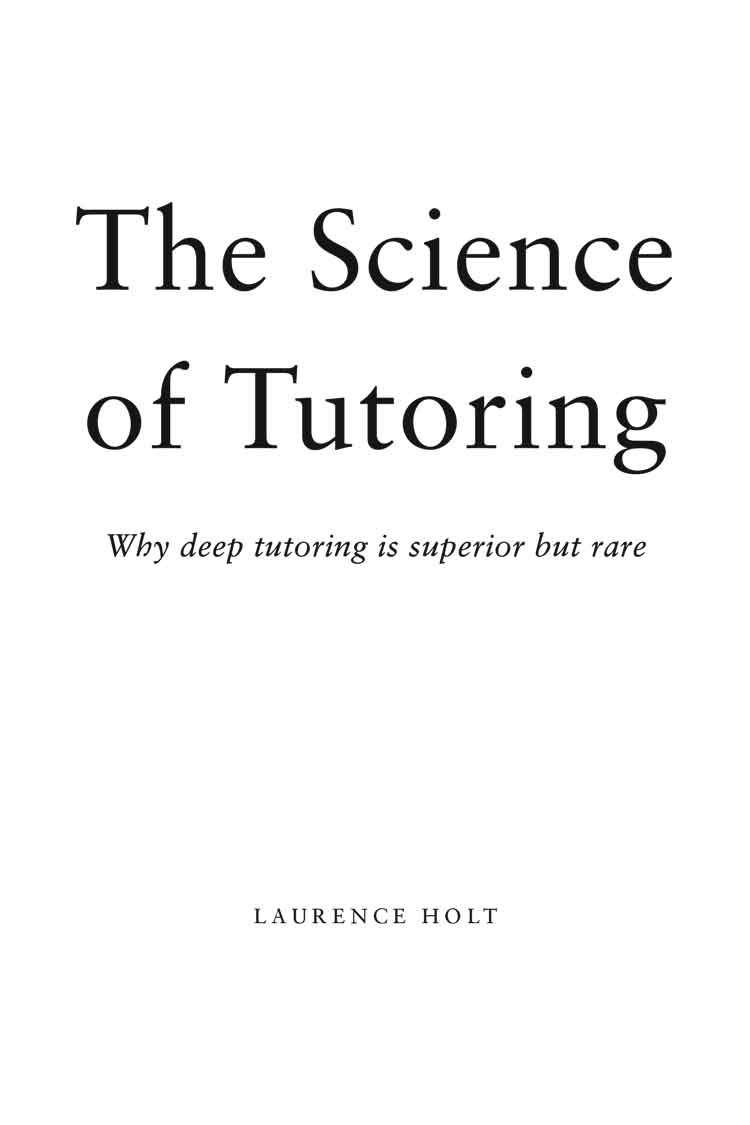5 / Feedback
In Western Australia, in the summer of 2006, John Hattie, an education researcher, had a brainwave. What if, he asked, you were to take the entire literature of educational methods—tens of thousands of papers— and run one enormous bake-off? Might you identify the handful of interventions that schools everywhere should implement?
It was a colossal task, but when Hattie published the list—and each time he has updated it since—the same method appeared at or near the top: feedback. By one estimate, feedback can double a student’s rate of learning.
On the face of it, there is not much to say about feedback. It is a powerful inducer of learning. And studies have shown that tutors do it liberally and instinctively. If a child points at a pig and says “sheep,” any adult within earshot will find it difficult to resist giving feedback4.
But, as ever, there is more to it than that. To get the full benefit of feedback—doubling the learning rate—the literature calls for feedback to be “well implemented.” What does that mean?
It does not mean non-stop. “Too much feedback, too often and too soon … can turn students into feedback junkies, too reliant on advice and therefore less likely to do well when left to their own devices,” says Hattie.
So, what’s the right way to do feedback? At its core, it is to help the student improve by revealing the gap between what they know and what they could know— call that the gap between a and b. This suggests two strategies: sometimes, the tutor can simply point out b; other times, the tutor can point out the existence of a gap and let the student figure out what it is and how to close it. In one case, you reveal the specific a-b gap, in the other you reveal only that there is a gap in need of closing.
The first strategy fits best with surface learning—perhaps during an earlier phase of learning in which students are collecting facts and not yet doing anything particularly interesting with them. The second strategy, letting them bridge the gap themselves, fits best with the deeper learning phase, when students are trying to fit facts together into something new.
For instance, if a student can’t recall Newton’s Third Law, tell them what it is (“Every force has an equal and opposite force”). If, instead, they can recite those words but are stuck when asked to draw the forces keeping a book sitting on a table, your feedback might remind them that the law exists and tempt them to use it, like seed laid down for a bird.
This means that, in deciding what feedback to give and when, tutors have to consider what type of learning they want to induce: surface or deep. In general, for any new concept, students progress from surface to deep. The tutor can close gaps of the former variety but simply highlight and allow the tutee to close those of the latter. The mix is key. A tutor who relies too heavily on the one will impart only surface learning and on the other risks imparting only frustration, as the lesson slows to a crawl and the arc of it is lost.
A powerful way to highlight the a-to-b gap is to use what James Nottingham, a teacher coach, calls a wagoll: What A Good One Looks Like. Instead of saying “Your diagram is missing a force over here,” say “A good force diagram will have arrows for all the forces, and every arrow will have an equal and opposite arrow.” The beauty of this approach is that it doesn’t divert the student from the work; it makes clear, succinctly, what the work is.
It is surprising how often the wagoll is news to the student. There is a story of a boy who read slowly whenever his teachers tested him. Let’s call him Sal. One day, a famous researcher visited the classroom and was asked to sit with Sal. The researcher listened to the boy read a passage accurately but plodding slow and said, “Now, Sal, would you read the passage again, but this time, the goal is to read it quickly, like this …” and read the first sentence at target pace—a wagoll. “Oh, okay,” Sal said and proceeded to read perfectly on grade level. Until that moment, he had thought the goal was to read each word carefully and with precision, just like he had heard his teacher do when he was first learning to read.
